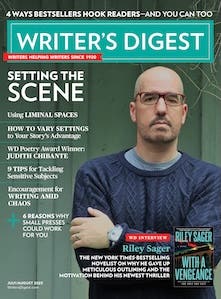Is Email the New Blogging?
The meme these days seems to be that e-mail newsletters (or content marketing through e-mail) is the new blogging. Actually, I lie. It’s a fairly old meme—I can at least…
The meme these days seems to be that e-mail newsletters (or content marketing through e-mail) is the new blogging.
Actually, I lie.
It's a fairly old meme—I can at least trace it back to this blog post by Jason Calacanis, a longtime respected blogger, who decided to start a paid e-mail newsletter instead of continuing to blog for free. (However, he's back to blogging now.)
What is content marketing? Here's the broad definition according to Wikipedia:
An umbrella term encompassing all marketing formats that involve the creation or sharing of content for the purpose of engaging current and potential consumer bases.
Content marketing subscribes to the notion that delivering high-quality,
relevant and valuable information to prospects and customers drives
profitable consumer action. Content marketing has benefits in terms of
retaining reader attention and improving brand loyalty.
Or, to use an analogy that I'm stealing from Kevin Smokler: content marketing is like giving out cheese cubes in the grocery.
Content marketing is a big deal for nonfiction authors, but can be a tougher thing to wrap your head around if you write fiction. (More on that later.)
So what does content marketing have to do with e-mail?
E-mail is a great medium for content, and helps you directly reach the people who most care about your content (or personality or brand). For anyone with an active newsletter list, I'm willing to bet that's where you get the most return on your effort when promoting something specific (as opposed to, say, Twitter or Facebook).
People who subscribe to your e-mail newsletter are the ones who want to know when you have something new to offer. For example, out of the dozens of links I included in my last newsletter—mostly to resources completely unrelated to me—the top 3 click-thrus were on the following links:
- My recent guest post at Writer Unboxed
- My new splash page at About.me
- A handout as PDF download, available only to newsletter subscribers
And, within the top 10 clicks: a link to my class on e-mail newsletters.
So, this makes a ton of sense when you have information and advice to share, but how about novelists or memoirists? Here are a few ideas, but this is only limited by your imagination. The only rule is to do something you care about, and that complements your strengths.
- Video.See what John Green does. What makes this work is that his personality is suited for video.
- Extras. You know how DVDs do it. You might not buy the DVD for the extras, but they're fun. Offer some added insight that fans are looking for.
- Curate / Help Discoveries Happen. Maybe there's a topic you know more about than anyone; hopefully it ties into your work, but it doesn't have to. Curate resources, links, news, etc. related to this topic to introduce people to helpful or inspirational stuff. (Maybe one day I'll do a bourbon newsletter. It would probably get more subscribers than the writing one.)
If you're unconvinced by the power of e-mail, I highly recommend this blog post: How to Build a Six-Figure Blog Without Anyone Knowing. While it's advanced & sophisticated advice, it shows you what's possible.
Want more in-depth instruction on using e-mail as part of your career? Sign up for my online class on Thursday.
P.S. This blog post is a form of content marketing for my online class.
Jane Friedman is a full-time entrepreneur (since 2014) and has 20 years of experience in the publishing industry. She is the co-founder of The Hot Sheet, the essential publishing industry newsletter for authors, and is the former publisher of Writer’s Digest. In addition to being a columnist with Publishers Weekly and a professor with The Great Courses, Jane maintains an award-winning blog for writers at JaneFriedman.com. Jane’s newest book is The Business of Being a Writer (University of Chicago Press, 2018).


